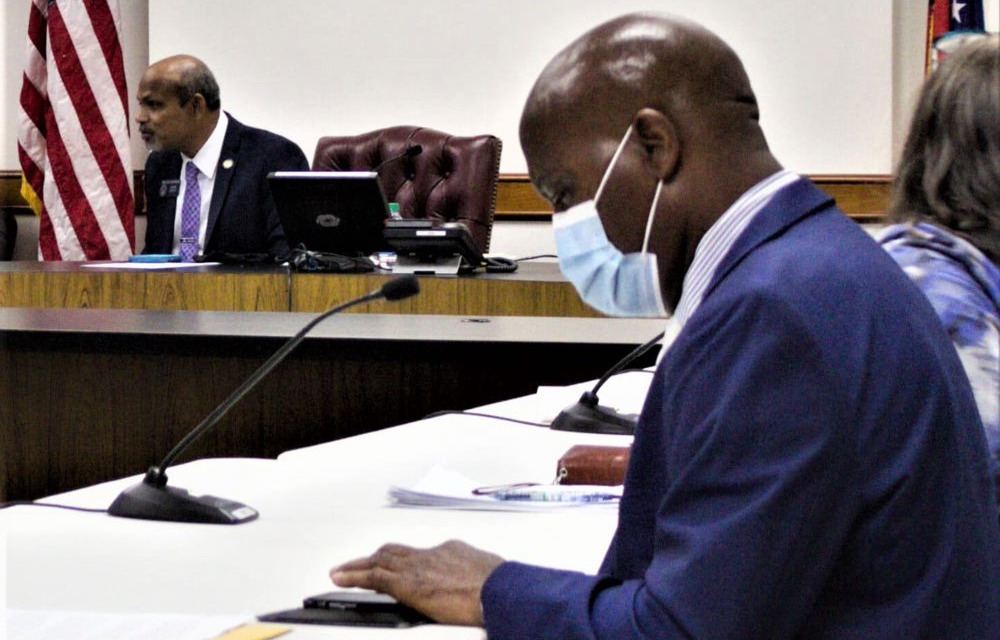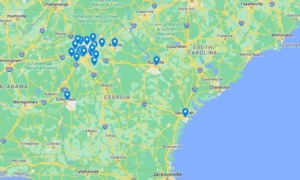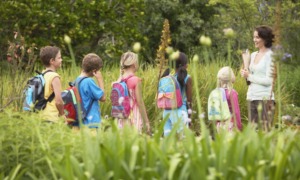ATLANTA — Students learn faster when they can see the evidence before their eyes, educators told Georgia lawmakers during a recent committee meeting on outdoor learning.
“Imagine how much easier it is to learn geometry while triangulating the height of trees,” said Zipangani Vokhiwa, a professor of science at Mercer University. “Or how social studies comes alive when kids investigate how people lived on their land many years ago. Descriptive writing flows more easily when students are observing nature.”
Vokhiwa was testifying before the Senate Outdoor Learning Study Committee earlier this month as it discussed the allocation of state and federal resources toward outdoor learning initiatives. The panel was asked to advocate for environmental education by representatives from schools, outdoor programs, and companies.
Sen. Sheikh Rahman, a Democrat from Lawrenceville who chairs the committee, said later in an interview that he is planning to visit Georgia schools and parks first in order to better determine how to effectively spend the funds that are currently available for outdoor education.
“I have multiple sites that I’m looking at in the coastal areas,” he said. “I am going to be traveling to the areas outside of Atlanta, maybe Columbus, Augusta, and Savannah. I should know by next week.”
Rahman acknowledged that being outdoors is very beneficial, not only for students. Rahman said he found that Georgia’s outdoor recreation economy provides 140,000 jobs annually, creates $6.3 million in wages, and brings in $1.8 billion in tax revenue.
Rahman said that studies have demonstrated that outdoor learning decreases the risk of spreading COVID and increases academic performance. Rahman said that many kids spend inordinate amounts of time indoors in front of a screen.
“There is a resource abundance in Georgia, and … of outdoor spaces,” Rahman said. “Yet children’s mental health is still distressingly low.”
The committee also heard from Suzannah Koilpillai, who is vice president of partnerships and growth for OutTeach, a national teacher-development nonprofit dedicated to providing all children with hands-on education.
Koilpillai said school districts can use federal grants, such as those from the Elementary and Secondary School Emergency Relief Fund, to educate teachers on better ways to craft lessons involving the outdoors.
OutTeach can help do this while working with teachers in an on-the-job way to minimize the strain on school staff. Koilpillai said that teachers have enough to deal with supervising their classes, which is why OutTeach representatives focus on moving the instruction into nature.
“We know that teachers don’t have time to do things that are outside of the standard,” Koilpillai said. “The challenges are around showing teachers and schools how to do this in a way that is going to have an impact. If you can provide resources, all of those barriers can go away.”
Koilpillai said that many kids do not receive nearly enough engaging science instruction in elementary school. She said that this is why there are large gaps in the Science, Technology, Engineering, and Mathematics workforce.
Vokhiwa is board president of the Environmental Education Alliance, which has the goal of connecting more people with nature. A former resident of Malawi, East Africa, Vokhiwa said that his formative years were spent outside.
Vokhiwa said he implements this in his Mercer classes, taking environmental science students outside for lessons.
“Seeing is believing,” he said.
If a class is shown a video about how the Grand Canyon was formed, he said, only students who have seen a canyon will have a frame of reference. This leaves many students not understanding the relevance.
If the same students were taken outside and shown how water poured down a hill can strip the dirt and erode the hillside, they would see how that force affects their surroundings.
“When students are involved in solving bite-sized problems in the schoolyard, like how to … improve the quality of water in a nearby creek, it … increases the student’s sense of being able to make a difference in the world,” said Vokhiwa.
Sarah Toffler of Children and Nature Network said that just a short amount of time per day outdoors can enhance a positive mood. She also said she thought students’ eyesight was currently deteriorating from lack of sunlight.
Koilpillai said that promoting outdoor learning is the key to engaging the kids.
“One of our coaches was working with a class on how to create a device that finds hidden water (in the ground). One of the kids was usually very quiet, and English wasn’t their first language,“ said Koilpillai. “This child did an amazing job on the project. At the end, the student said that ‘When I grow up I want to go back to my home country and show people how to be an engineer.’ That is pretty amazing.”
This story was originally published on Fresh Take Georgia.
































